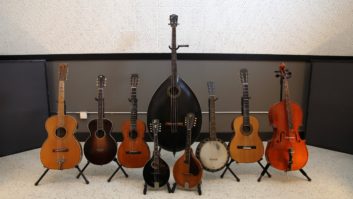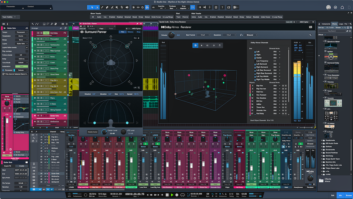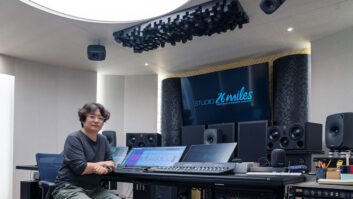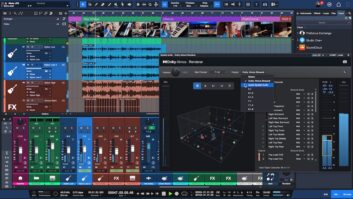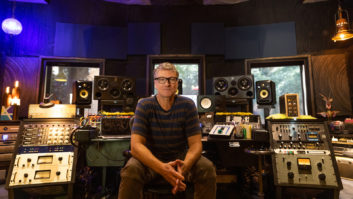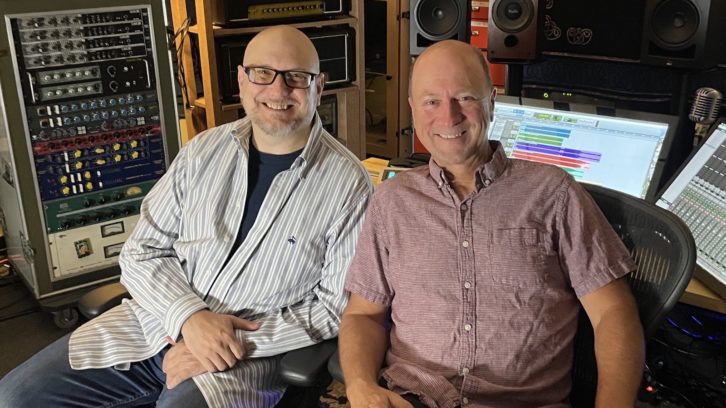
Los Angeles, CA (June 15, 2022)—As the momentum behind Dolby Atmos for Music continues to build in the wake of the launch of Apple Music’s Spatial Audio platform in May 2021, producer, mixer and engineer Matt Wallace has unveiled an immersive audio upgrade at his Los Angeles-based Studio Delux.
Wallace, whose 30 years of credits include Faith No More, The Replacements, O.A.R., Maroon 5 and others, opened his 1,000-squarefoot facility in 2005 in the Sound City Studios complex in Van Nuys, Calif. There, Wallace has worked with his engineer, Will Kennedy, a mixer and fellow producer, for the past 15 years.
“Will had the vision of what kind of equipment to use, how to set the room up, all the calculations,” Wallace says of the mix room upgrade. “Will knows all the rules for the deliverables, and I tend to be Mr. Mix-With- Your-Elbows and go for the vibe. So it’s a nice symbiotic relationship.”
They were spending their own money, Kennedy says, so “I gave myself the task of finding every potential option for every piece of equipment we needed, and figuring out what we could do that was going to serve our needs for the least amount of money, but still be professional.” For the biggest expense, he says, “I looked at what low-cost speakers punch above their weight, and, ultimately, we ended up with Kali Audio speakers.”
For one thing, Kennedy says, “They sound better than anything else at their price point; in fact, they sound better than things above their price point. It also seemed like a good idea to partner with a company that was local, and Kali is in Burbank,” a 20-minute drive away.
Classic Tracks: “I’ll Be You,” The Replacements
Studio Delux’s mix room now sports an LCR trio of Kali Audio IN-8s, four LP-6 surrounds and four overhead IN-5s, with two WS-12 subwoofers, one for LFE and one for bass management. “We didn’t want to have one subwoofer attempting to do two different jobs at the same time,” Kennedy explains.
A JBL Intonato 24 DSP box provides tuning, control and management. “The software is very straight-ahead; it’s been a really solid platform for us,” he says.
“Matt said, ‘Let’s go modern and sleek with everything,’ so we also got a Slate Raven for when we want to put hands on faders,” Kennedy continues, “and we have a big LG display so we can have multiple things up at the same time.”
Following Kennedy’s careful calculations, Wallace anchored the overhead speakers in the concrete above the ceiling cloud. Overall, Wallace says, “When Dolby came to tune our room, they found we were only off by half a millisecond. Because the speakers are freestanding, there’s no coupling with the room, so our room is incredibly accurate.”
How they approach an Atmos mix varies depending upon whether they have stems or the multitrack. Mixing Faith No More’s “Epic,” from 1990, they found Wallace had tracked four rhythm guitars. “Now, instead of having four guitars in the front, there’s two in the front and two in the back, and it sounds huge,” Kennedy says.
They mixed the B-52’s “Love Shack” (they also mixed “Roam”) from the multitrack, too. “We had to create the stereo mix first,” Kennedy says, “and, by the way, match all their sounds,” to pass muster with the fans familiar with every nuance of the 1989 original. “Matt said, ‘It doesn’t sound quite right.’ Come to find out, it wasn’t the right speed compared to the master that was released to the public. And it did affect the timbre of the track.”
“We always put ourselves in the mindset of the artist, the producer, the mixing engineer. What would they do if they had Atmos?” Wallace says. “We want to make everything fit and feel like super-stereo. We want to serve the song— that’s the biggest thing.”
